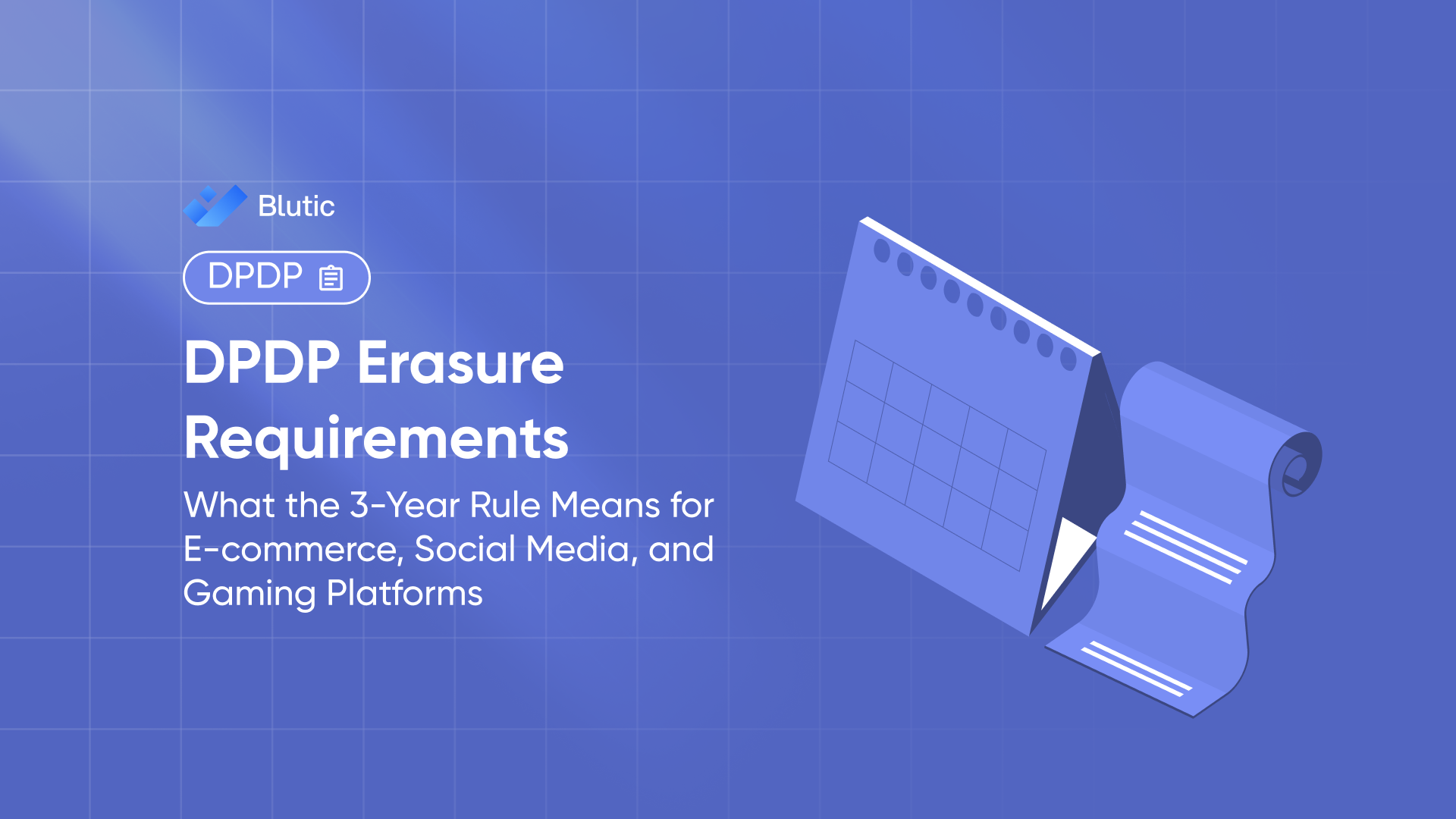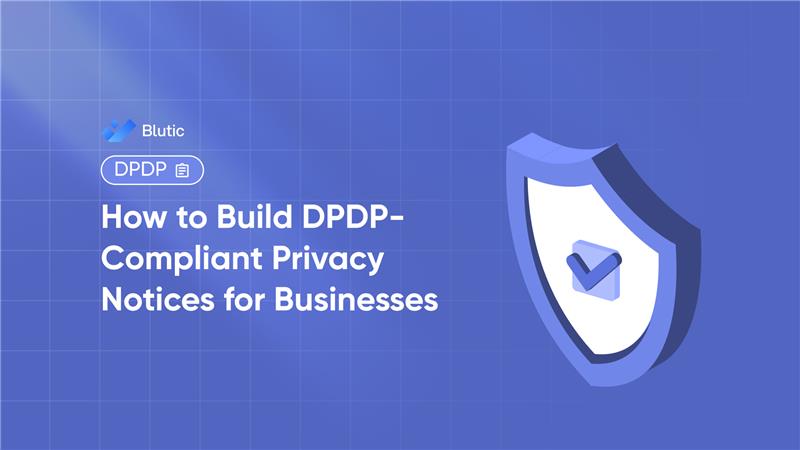DPDP Erasure Requirements: What the 3-Year Rule Means for E-commerce, Social Media, and Gaming Platforms

DPDP Erasure Requirements: What the 3-Year Rule Means for E-commerce, Social Media, and Gaming Platforms
Why Data Erasure Rules Matter Now
With the enforcement of the Digital Personal Data Protection Act (DPDPA), 2023, businesses across sectors are being held to higher standards of accountability, especially when it comes to data retention and erasure. The 3-year storage rule laid out in the DPDP Rules, 2025 is now in effect forcing e-commerce platforms, social media apps, and gaming companies to rethink their data lifecycle strategies.
But what does this rule actually say? And how do you comply without disrupting your user experience?
Let’s break it down.
What the DPDP 3-Year Data Erasure Rule Says
As per Rule 5(1)(d) of the Digital Personal Data Protection Rules, 2025, if a Data Principal (user) has not accessed your platform for 3 continuous years, the Data Fiduciary (you) must:
- Erase the user's personal data, AND
- Inform the user that such data has been erased.
This applies unless there’s a legal requirement to retain that data (e.g., tax laws or court orders) .
Which Businesses Are Affected?
This rule has direct implications for:
E-commerce Platforms
- Users who haven’t logged in or made a purchase for 3+ years must be flagged.
- Their data (personal info, order history, preferences) should be erased unless retention is legally required.
Social Media Apps
- Inactive users who haven’t opened the app or posted/interacted for 3 years are covered.
- All stored personal data, interactions, and content linked to them must be wiped.
Gaming Platforms
- Gamers who haven’t played, updated their profile, or logged in for 3 years must have their data erased.
Why This Rule Is Crucial
This isn't just about reducing data clutter it's about reducing risk:
- Fines of up to ₹250 crore for non-compliance under the DPDP Act.
- Breach risks increase with unnecessary data storage.
- Trust erosion among users who feel their data is stored indefinitely
Key Compliance Checklist for the 3-Year Rule
Automate Inactivity Detection:
Track user login and interaction histories to flag accounts inactive for 36 months.
Define “Last Accessed”:
Ensure clarity does opening the app count? Or only logging in? Set internal criteria.
Build Erasure Pipelines:
Set up backend workflows to identify, isolate, erase, and audit inactive user data.
Communicate with Users:
Send a courtesy notification post-erasure informing users of their data deletion.
Legal Exemptions:
Maintain a record of exemptions where law mandates longer data retention.
Blutic: Your Data Erasure & Consent Ally
Platforms like Blutic help simplify compliance with DPDPA data lifecycle mandates:
- Consent Lifecycle Management: Track how and when data was collected, to inform retention.
- Auto-Erasure Flows: Schedule workflows to erase inactive user data post 3 years.
- Audit Trail & Logs: Maintain evidence for regulators that you erased data as required.
- Consent Notice Updates: Inform users upfront about your data deletion policies.
If you're looking for an affordable cookie consent platform or a DPDPA compliance tool for e-commerce, social media, or gaming, Blutic has you covered.
Don’t Let Dormant Data Become a Liability
The 3-year rule is not just a bureaucratic hoop it’s a safeguard. Holding on to outdated personal data increases your legal exposure, clutters your systems, and violates user trust.
With DPDP in full force, erasure is no longer optional it’s a requirement. And it starts with knowing who your dormant users are.
Frequently Asked Questions
More Blogs
Get the indise scoop: the latest tips, tricks, & product updates
%20.png)




